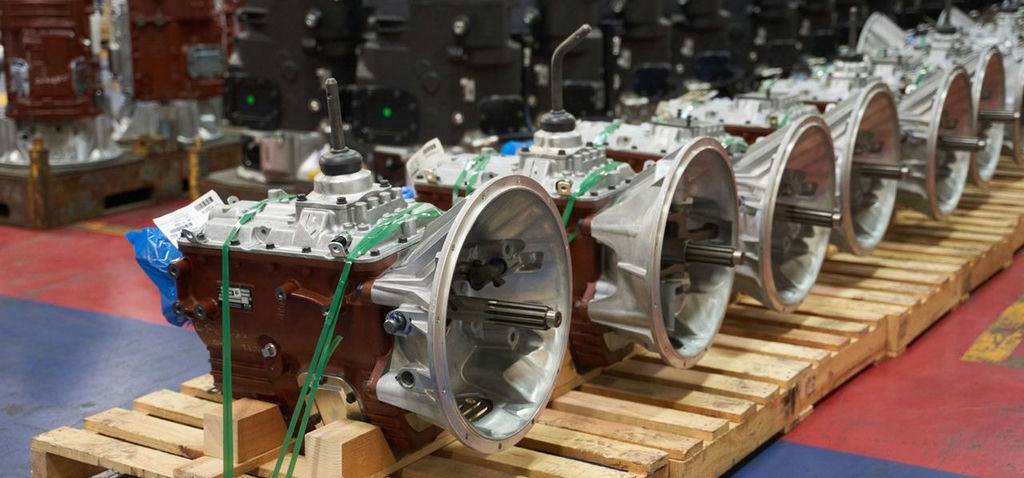Overview
Founded in 1911, the Eaton Corporation is a worldwide leader in power management solutions spanning a diverse range of markets, from aerospace to mining to healthcare to automotive. With more than 97,000 employees, Eaton today does business in 175 countries around the globe and boasts annual revenues of more than $21 billion.
The Challenge
Part of Eaton’s Industrial Sector, the Vehicle Group produces a wide array of parts intended to improve the overall efficiency, performance and power of everything from passenger cars to commercial vehicles.
Like many other automotive suppliers, Eaton needs to minimize the downtime on their manufacturing lines in order to keep up with the rapid iteration in vehicle design and the massive, world-wide demand for parts.
In addition to tooling and fixturing for mass production, Eaton also produces one-off, custom solutions for customers around the globe.
For Eaton, the question was twofold: How can they quickly re-tool manufacturing lines to reduce downtime, and how can they develop and prototype custom parts for unique transportation challenges?
To find answers, Eaton engineers turned to Desktop Metal and the Studio System™.
From Tooling To Replacement Parts
The Studio System™’s impact at Eaton was immediate.
With the ability to quickly print a wide variety of tooling and fixtures – from a complex set of pneumatic jaws used in a gear chamfering process to relatively simple press tools – engineers were able to cut the lead time for tooling by more than 60 percent, from three to four weeks to just five to 10 days.
At the same time, the system has helped the company significantly reduce tooling and fixturing costs for mass-produced parts – depending on the size and design complexity, printed tools are, on average, between 40 and 80 percent less expensive.
That ability to quickly produce tooling at far lower cost than traditional manufacturing not only enables Eaton to produce a vast range of automotive parts, but also allows the company to quickly retool manufacturing lines as needed, significantly reducing downtime.
In addition to reducing downtime, additive manufacturing has allowed Eaton’s designers to explore new levels of design complexity and create parts – like an oil fill nozzle – that include internal channels, allowing for faster testing of parts.
In addition to tooling and fixturing for mass production, the Studio System™ also proved to be an ideal tool for producing custom fixturing. In one case, Eaton engineers used the system to create a custom fixture for testing product development prototypes in Italy.
When it came to printing parts on the Studio System™, Eaton engineers didn’t stop at tooling and fixturing. As with other manufacturing facilities, Eaton must constantly maintain their equipment, and replace parts – like door brackets or chain guides – as they become worn or broken.
To avoid extended periods of downtime while waiting for replacement parts, the company must either keep a large number of replacement parts on hand or pay a premium to have the parts made quickly via traditional methods.
The Studio System™, however, offered a third option. Using 3D scans of parts, Eaton engineers were able to reverse engineer models of several parts where drawings were not available and adapt existing designs for printing.
Using the Studio System™, they were then able to produce replacement parts in just days – far faster than traditional manufacturing – allowing Eaton to return the equipment to service faster. The printed parts were also significantly cheaper – in some cases by more than 90 percent – than their traditionally-manufactured counterparts.
The Solution – Desktop Metal
Though Eaton had years of experience using polymer printers, the company last year began searching for a metal 3D printing system that could support their shop floor.
The company chose to invest in the Studio System™ due to its ability to significantly reduce the cost and lead time to produce tooling and other parts, as well as its ease of use and office-friendly design. Since it uses no loose metal powders or dangerous lasers, operators don’t need personal protective equipment.
With the ability to address customer needs faster and iterate on parts quickly, the system is now a standard part of the workflow for both the Engineering and Tool Room teams, and is used daily to support operations around the globe.
The system has become so successful that Eaton is now exploring the idea of investing in binder jetting technology for production parts.
Download the case study, here!


